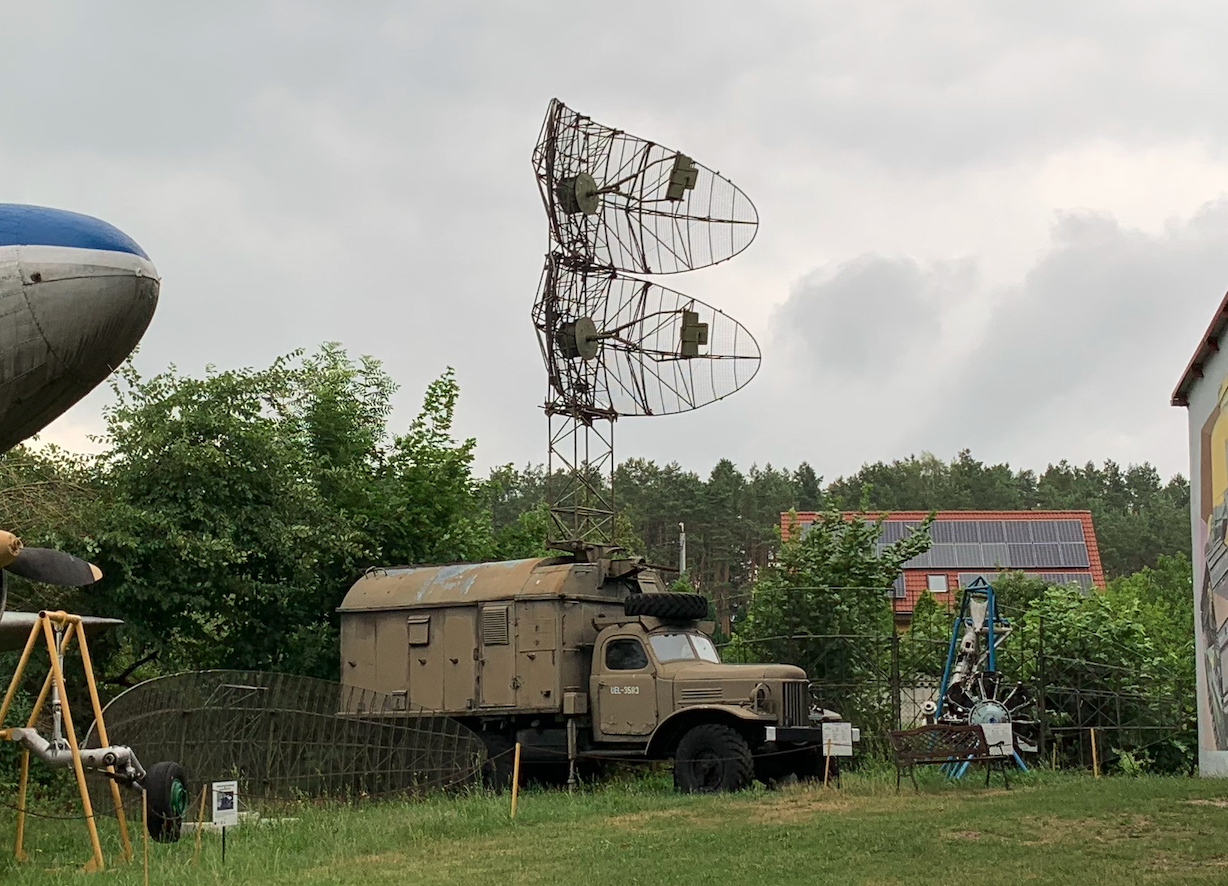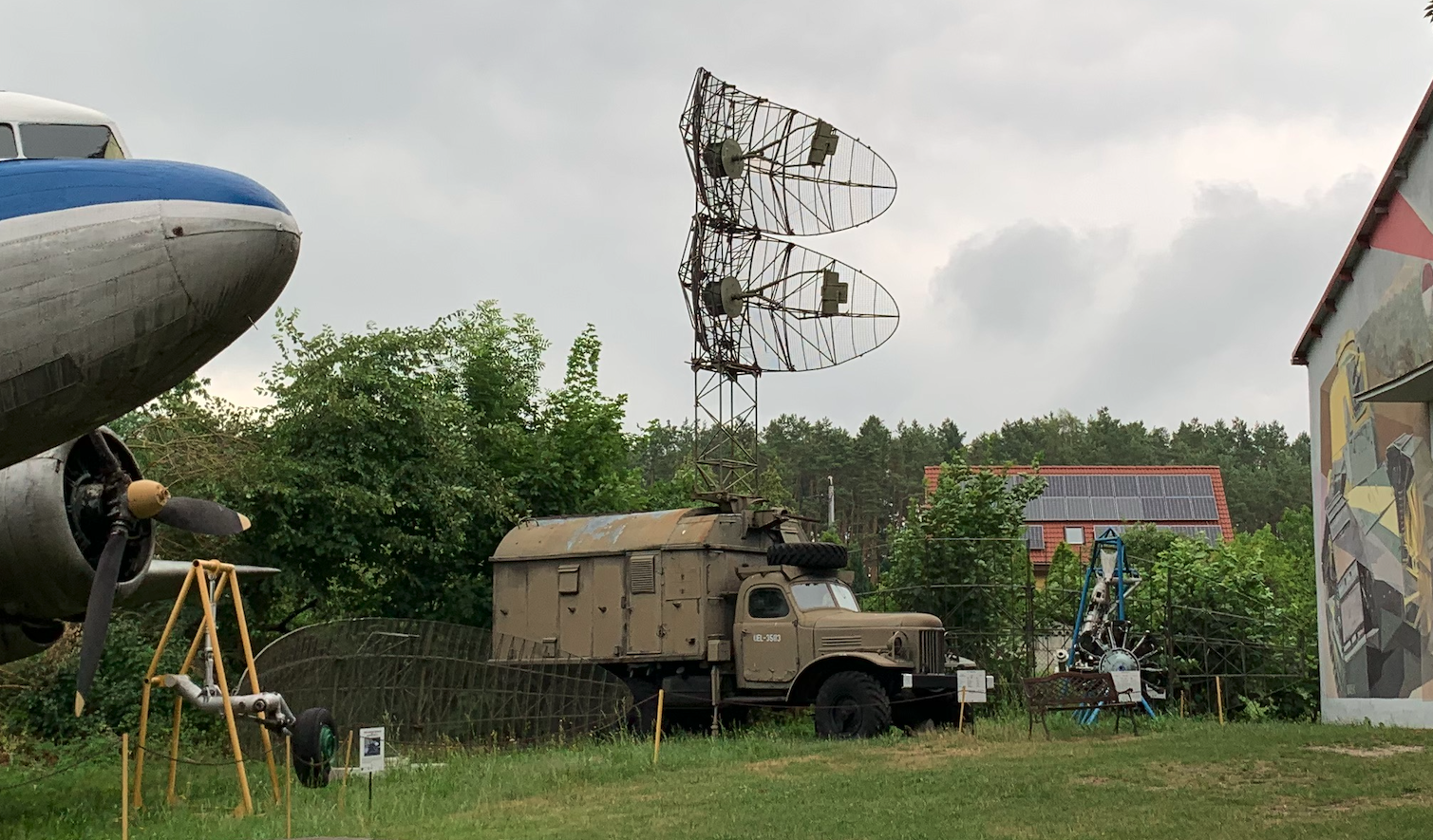Drzonów 2022-11-18
Radars P-15 Danuta, P-19 Renata.
The P-15 Danuta and P-19 Renata radars are former early warning radars produced in CCCP. These radars were used in the Warsaw Pact countries. The radars were of the 2D type and were used with the S-125 Newa missile system. CCCP’s P-15 radar was developed in 1955 and was intended for detecting aerial targets. The P-15 is a mobile radar. The radar is equipped with two antennas. The radar has a maximum detection range of 150 km and detects targets up to an altitude of 3,000 m. The detection accuracy was up to 300 m. The radar has a beam elevation from 2 degrees to 14 degrees. The maximum radar power is 270 kW. Getting ready for work took 10 minutes. The set consists of two ZIL-157 trucks.
The P-15 radar in the NATO code is Flat Face. The P-15 radar can work in combination with the S-125 Newa missiles. From 1975, an improved version of the P-19 Renata radar was produced.
Radar P-15 Danuta.
The Soviet P-15 "Tropa" radar had the factory designation 1RL13. It was designated "Flat Face A" in the NATO code. The radar was of the 2D type and operated on the UHF wave. The radar belonged to the first generation. In the Polish Army, the radar was marked P-15 Danuta.
Work on the P-15 early-warning radar began in 1952 at the SRI-244 office. The Soviets modeled on the American radars they received during World War II. State tests of prototypes were carried out until 1955. A decision was made to introduce the radar into service in the anti-aircraft units of the Soviet armed forces. The radar was failing. It had a low detection ceiling of only 3,000 m. It was paired with the S-125 Newa anti-aircraft system. Work on modernization was also continued and the P-15M2 radar was created. This radar received only one antenna, but it was placed on a 20 – 30 m high mast.
In 1959, the P-15M radar was sent for testing, which no longer had an old mercury lamp, but a newer one. In 1962, tests of the P-15N radar began, which received a more sensitive receiver and more power in the impulse. From 1970, the P-15MN radar was tested, which used the Doppler effect and was more resistant to ground reflection noise.
P-15 is a high mobility radar. With the antenna mounted directly on a single ZiŁ-157 truck. The system could be assembled and dismantled in 10 minutes. The P-15 radar uses two open-frame elliptical parabolic antennas for both transmit and receive, with each antenna powered by a single antenna feed. Each antenna has a span of 11 m. The radar can quickly change its frequency to one of four preset frequencies to avoid active interference, with passive interference being removed by a coherent Doppler filter. The P-15 Danuta radar worked together with the radio-altimeter.
Radar P-19 Renata.
In 1975, the P-19 Danube radar was put into production, with the factory designation 1RL134, and in the NATO code "Flat Face B". The P-19 radar was marked Dunaj, and in Poland the name Renata was used. The P-19 radar was used for the S-125 Newa missile system.
The P-19 radar was developed in 1974 and is based on the P-15 radar technology. However, it has better parameters: Range 260 km. Power 900 kW. The P-19 featured new electronics over the previous P-15, including a new magnetron transmitter. The P-19 is a decimal wave radar. Its frequency ranges from 830 to 875 MHz.
The P-19 shares many of the physical features of the previous P-15 radar. The P-19 radar is a highly mobile radar with an antenna mounted on a single ZIL-131 truck. Electronic equipment is installed in the second ZIL-131 truck. The P-19 uses two open-frame elliptical parabolic antennas to accomplish both transmit and receive, with each antenna powered by a single antenna feed in a manner similar to the P-15.
Written by Karol Placha Hetman


